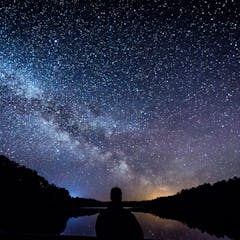
Artikel-artikel mengenai Saturn
Menampilkan 1 - 20 dari 60 artikel

Saturn’s moon Enceladus has geysers shooting tiny grains of ice into space. These grains could hold traces of life − but researchers need the right tools to tell.

The Solar System could be awash with oceans, not on the surface but hidden inside the most surprising bodies

Among the missions being planned is a huge helicopter drone to explore Saturn’s moon Titan.

Viral headlines would have you think Saturn’s rings will vanish in just 18 months. Here’s what that really means and why you don’t need to worry.

Phosphorus is the most elusive element crucial for life as we know it – and we now have the first evidence there’s some available in the oceans of Enceladus.

Five out of the six essential elements required for life on Earth were known to exist on Enceladus. Now the sixth and final one has been found too.

Female characters in Greek mythology lived under strict patriarchal rules, but they spoke truth to power and resisted injustice.

New research suggests Saturn’s rings may be surprisingly young.

It all starts with a cloud of gas and dust.

A scholar of Greek mythology explains the naming of NASA’s missions after mythological figures and why the name Artemis is indicative of a more diverse era of space exploration.

There has never been a dedicated mission sent to the “ice giants”, Uranus and Neptune. But there may be one on the horizon.

Saturn, Jupiter, Neptune and Uranus all have rings.

Such a mission could be developed soon, allowing astrophysicists to take selfies of the solar system and use the Sun’s gravity as a lens to peer deep into space.

Gravity, mass and centrifugal force all contribute to the final shape of a planet.

From the tallest cliff in the solar system to its largest impact basin, geological processes on other worlds are very similar to those on our own planet.

From the birth of Jesus Christ to Newton’s discovery of gravity, great conjunctions of Jupiter and Saturn have many notable connections in human history.

The 2020 winter solstice is also when Saturn and Jupiter appear closest to each other for 60 years, Here’s what you need to know about both the events.

The clouds of Venus may harbour alien life. But where else?

We’re not sure how the rings work or how they formed, but there are a few theories.

Many people are still upset that Pluto was demoted from being a planet. But definitions of various celestial objects are fairly fluid. So whether it is an asteroid or moon or planet is up for debate.
